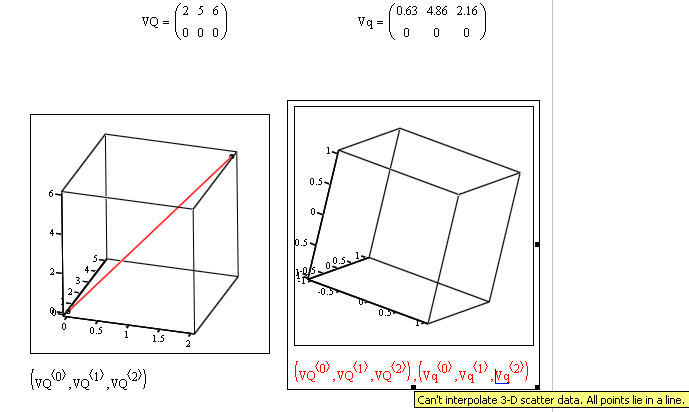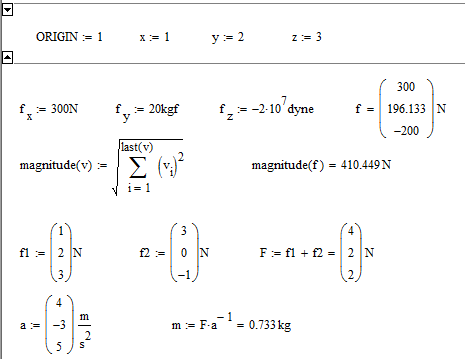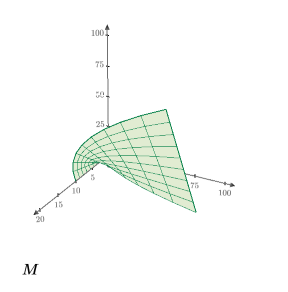
of 6Column M 6Determinant |x| → Vectorize sin(M) 1 MT Transpose 1.10 8Range variable uxv Cross product u of 6Greek UC LC RomanAlpha Α α A/aBeta Β β B/bChi Χ χ C/cDelta Δ δ D/dEpsilon Ε ε E/eEta Η η H/hGamma Γ γ G/gIota Ι ι I/iKappa Κ κ K/kLambda Λ λ L/lMu Μ μ M/mNu Ν ν N/nOmega Ω ω W/wOmicron Ο ο O/oPhi Փ Φ F/jPhi(alt.) φ fPi Π π P/pPsi Ψ ψ Y/yRho Ρ ρ R/rSigma Σ σ S/sTau Τ τ T/tTheta Θ θ Q/qTheta (alt.) JUpsilon Υ υ U/uXi Ξ ξ X/xMatrix Toolbar Example KeystrokeOperator MInsert matrixfile://C:\Program Files\Mathcad\Mathcad 14\doc\HELP_EN\Keyboard\Keyboard_short. of 6Infinity ∞ ZIterated product Iterated product with range variables BLeft-hand limit LTwo-sided limit ARight-hand limit Summation GSummation with range Keystrokevariables XGradient Evaluation Toolbar Operator ExampleCustom infix operator xf圜ustom postfix xfCustom prefix fxCustom treefix operator f ΛDefinition xyEvaluation x := 5Global definition x=5Evaluate symbolically x≡5 z→5Greek ToolbarEnter Roman, then type G for Greek.file://C:\Program Files\Mathcad\Mathcad 14\doc\HELP_EN\Keyboard\Keyboard_short.

Activates the chart (mine was called “Chart7”) and selects the plot area.

EndArrowheadStyle = msoArrowheadTriangle EndArrowheadWidth = msoArrowheadWidthMedium EndArrowheadLength = msoArrowheadLengthMedium Yvalues = "=Sheet1!$F$" & i + 4 & ":$G$" & i + 4ĪctiveChart.FullSeriesCollection(i).xvalues = xvaluesĪctiveChart.FullSeriesCollection(i).Values = yvaluesĪctiveChart.FullSeriesCollection(i).Select The VBA for the subroutine is below:ĪctiveSheet.ChartObjects("Chart 7").Activate Instead of adding each vector manually by clicking buttons in Excel, I created a subroutine to add each series. 🙂 I’m guessing you do too! So, let’s do it a little more smartly, shall we? Using VBA to Add Data Series’ to an Excel Scatter Chart I have better things to do than click buttons all day to add all the individual vectors to this chart. I also made the plot area square so that it doesn’t skew the vectors.Īll that’s left is to repeat this process for each vector. Now I have something that looks like a vector on my chart.
#Mathcad vectorize series#
I selected the data series first, then navigated to the Chart Tools> Format tab to add the arrow head. Next, I added an arrow head to the vector by changing its formatting. Next, I added the new series by selecting the first row of x1 and x2 values as the “Series X-Values” and the first row of y1 and y2 values as the “Series Y-values”. To start populating the chart, I right-clicked on it and chose “Select Data” from the menu. So, I started by inserting a blank one on the worksheet.Įach vector will be represented by a data series. The vector plot is made from the scatter chart type in Excel. Now that we have four columns of values that fully define the vectors, we can create our vector plot in Excel. If you were trying to make a vector plot from existing data, you could add another column to multiply your data by a scaling factor. To address this, I added a scaling factor in the calculation for x2 and y2. Typically, in a vector plot, what we care about is the relative size of the vectors compared with one another. But, this absolute position makes the vectors REALLY LARGE relative to the grid spacing. The head of the vector should be located at the position x1+f x and y1+f y. These points will be the head or arrow end of the vectors. In the columns immediately next to x1 and y1, I then created the x2 and y2 columns.

So, the first step then, was to create two columns for the x1 and y1 values, or the position of the tails of each vector.

I also decided, for simplicity, to place the tails of each vector, rather than the mid-point, on the grid. I chose an evenly spaced grid with dimensions 0.3 x 0.3. The first step was to define the grid for the vector field. For this exercise our vector field will be defined by the following: I didn’t have any vector data handy, so I had to make some up.


 0 kommentar(er)
0 kommentar(er)
